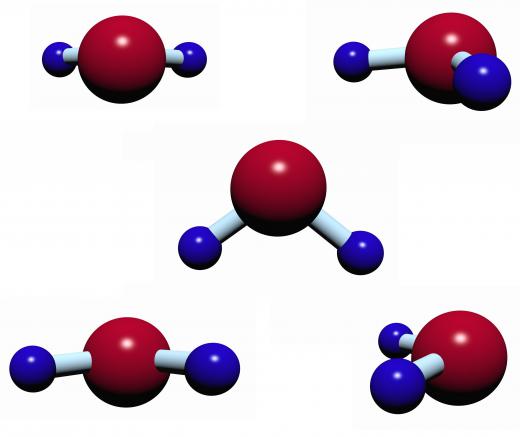What Is Sulfate Precipitation?
Sulfate precipitation occurs when a precipitation reaction is brought on by adding a sulfate salt to a certain solution. Most of these precipitation reactions are concerned with extracting proteins from a solution. Two major methods are used in sulfate precipitation, one of which is referred to as “salting out” and requires excessive amounts of salt to be added to a solution to cause the protein to precipitate. The other uses cold salt solutions of decreasing concentration followed by gradual warming to cause the proteins to crystallize.
Chemical reactions take many different forms. One example of a chemical reaction is dissolving, commonly experienced when sugar is added to coffee. Precipitation can be thought of as the opposite of this, in that solids form out of a solution and “precipitate” down into the solution. This occurs when two different soluble solutions are combined within a container to create a substance that is not soluble. No matter is lost in a chemical reaction, rather a more reactive chemical displaces a less reactive one and leaves a solid as a by-product of that reaction.

To correctly understand sulfate precipitation, it is necessary to understand what actually happens at an atomic level during dissolving reaction. When sugar is added to water, the sugar molecules bond with the water ones, of which there is always a finite number. Eventually, if a person was to keep adding sugar to water, the solution would be completely saturated, meaning that there weren’t any water molecules left to bond with the sugar molecules and make them dissolve. This means that any sugar added after this point will not dissolve, and simply will sit in the bottom of the cup.
During sulfate precipitation, the same thing essentially happens, except that there is another compound besides the sulfate salt jostling for position with the water molecules. More reactive materials can displace bonds formed by less reactive ones. This means that the salt, which is generally ammonium sulfate when proteins are being extracted, takes the protein’s place in the solution, and the protein solidifies like sugar in the bottom of a cup. Because the protein had already been dissolved in the water, it appears to form out of nothing and precipitates down into the container as a solid.
The simplest method used to extract proteins in this way is referred to as “salting out.” This is essentially the same as the reaction described above, in that excessive amounts of salt are added to a solution to cause the protein to solidify. A second method of sulfate precipitation is also used, whereby the proteins are extracted using a concentrated ammonium sulfate solution, and then cold solutions of ammonium sulfate are added to isolate the proteins which are mote soluble at higher concentrations. The cold solutions gradually decrease in concentration, and the entire solution is warmed slowly to crystallize the proteins.
AS FEATURED ON:
AS FEATURED ON:











Discuss this Article
Post your comments